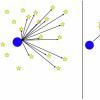Here is the entire abstract, bolding mine. The depolarization and swelling was identified by the researchers to be due to the structure of the MitoQ, and another mitochondrial antioxidant didn't cause the problem even at a very high dose.
Kidney proximal tubules (PTs) contain a high density of mitochondria, which are required to generate ATP to power solute transport. Mitochondrial dysfunction is implicated in the pathogenesis of numerous kidney diseases. Damaged mitochondria are thought to produce excess reactive oxygen species (ROS), which can lead to oxidative stress and activation of cell death pathways. MitoQ is a mitochondrial targeted anti‐oxidant that has shown promise in preclinical models of renal diseases. However, recent studies in nonkidney cells have suggested that MitoQ might also have adverse effects. Here, using a live imaging approach, and both in vitro and ex vivo models, we show that MitoQ induces rapid swelling and depolarization of mitochondria in PT cells, but these effects were not observed with SS‐31, another targeted anti‐oxidant. MitoQ consists of a lipophilic cation (Tetraphenylphosphonium [TPP]) joined to an anti‐oxidant component (quinone) by a 10‐carbon alkyl chain, which is thought to insert into the inner mitochondrial membrane (IMM). We found that mitochondrial swelling and depolarization was also induced by dodecyltriphenylphosphomium (DTPP), which consists of TPP and the alkyl chain, but not by TPP alone. Surprisingly, MitoQ‐induced mitochondrial swelling occurred in the absence of a decrease in oxygen consumption rate. We also found that DTPP directly increased the permeability of artificial liposomes with a cardiolipin content similar to that of the IMM. In summary, MitoQ causes mitochondrial swelling and depolarization in PT cells by a mechanism unrelated to anti‐oxidant activity, most likely because of increased IMM permeability due to insertion of the alkyl chain.
Plasma concentrations are not relevant, as pointed out by the researchers, because MitoQ concentrates in the mitochondria and stays there:
However, since MitoQ accumulates into mitochondria at very high concentrations, the possibility remains that it could have effects on mitochondrial function other than on ROS levels, not all of which might be beneficial. For example, a recent study has reported that MitoQ can actually increase ROS production in some cancer cells, and this is associated with a decrease in Δψ m and mitochondrial DNA (mtDNA) copy number (Pokrzywinski et al. 2016).
The structure of the molecule seems to be at fault:
Since SS‐31 did not cause the same mitochondrial swelling as MitoQ, even at a very high dose, we considered that the toxic effects observed with the latter are probably unrelated to its anti‐oxidant activity. To investigate this, we assessed the individual effects of different structural components of MitoQ. We found that TPP (500 nmol/L), the mitochondrial targeting cation of MitoQ, did not induce any acute deleterious effects on mitochondria in OK cells (Fig. 2A–B). However, dodecyltriphenylphosphomium (DTPP) (500 nmol/L), which consists of TPP plus the carbon alkyl chain (but lacks the anti‐oxidant quinone), caused acute mitochondrial swelling and depolarization, identical to that induced by MitoQ (Fig. 2A–B). These findings suggest that the toxic effect of MitoQ on PT cell mitochondria is indeed unrelated to anti‐oxidant activity, and that the carbon alkyl chain plays an important role.
They used the same solutions for MitoQ, for SS-31 and for the structural analog of MitoQ and found the depolarization and swelling issue only with MitoQ and its structural analog. So there was clearly no problem which can be blamed on a concentrated polar solution.
To me, this looks very bad for MitoQ, and is a compelling argument for avoiding it entirely.
This test was in vitro. They cultured opossum kidney cells in some sort of buffered isotonic saline and then introduced them to a 500nmol solution of MitoQ.
For this test to have any meaning, you'd have to know what sort of concentration taking a normal dose of MitoQ (250mg) would induce in vivo in a human. I don't know what that number is, but 500nmol sounds on the high side of what might be realistic. I would guess that you might see something in the tens of nmol. But that's just a guess.
The fact of the matter is that if you put cells in any sort of sufficiently concentrated polar solution, the mitochondria will swell and depolarize.
The right question for Greg would be "what plasma concentration of MitoQ have you seen as a peak after a standard dose?".
Perhaps someone could invite Greg over to this thread.
Edited by smithx, 13 June 2019 - 06:54 PM.






























































